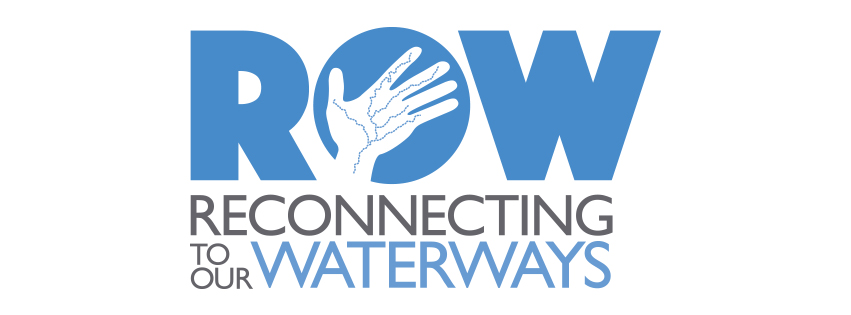What My Waterway Means To Me
Our waterways and the natural spaces that surround them continue to be an important aspect of Indy’s neighborhoods. Members of our waterway communities reflect on these critical and nurturing spaces in 2020. See the short videos that capture their reflections by clicking on the images below.
Hardy grew up on the White River and reflects on how recent attentions to the river are changing his perceptions.
Click on the image to hear his story.
Gutierrez reflects on what the waterway and the Rev. Charles Williams Park means to the Crosstown neighborhood along Fall Creek.
Click on the image to hear her story.
Goens reflects on how Pleasant Run waterway has far-reaching impacts.
Click on the image to hear her story.
Rice reflects on the opportunities for quality of life and economic development along Central Canal waterway.
Click on the image to hear his story.
Bardon, a resident and a small business owner near the waterway, reflects on the beauty and ecology of Little Eagle Creek.
Click on the image to hear his story.
As Brookside Park Manager, Barnes offers a unique reflection on what waterways mean to children as he stands on the banks of Pogue’s Run waterway.
Click on the image to hear his story.
Winter on the Waterways
We are all part of nature and our urban spaces shape our experience of that relationship. To explore this, we talked with several waterway community members over the winter to get a sense of how each of them experience their neighborhood waterway.
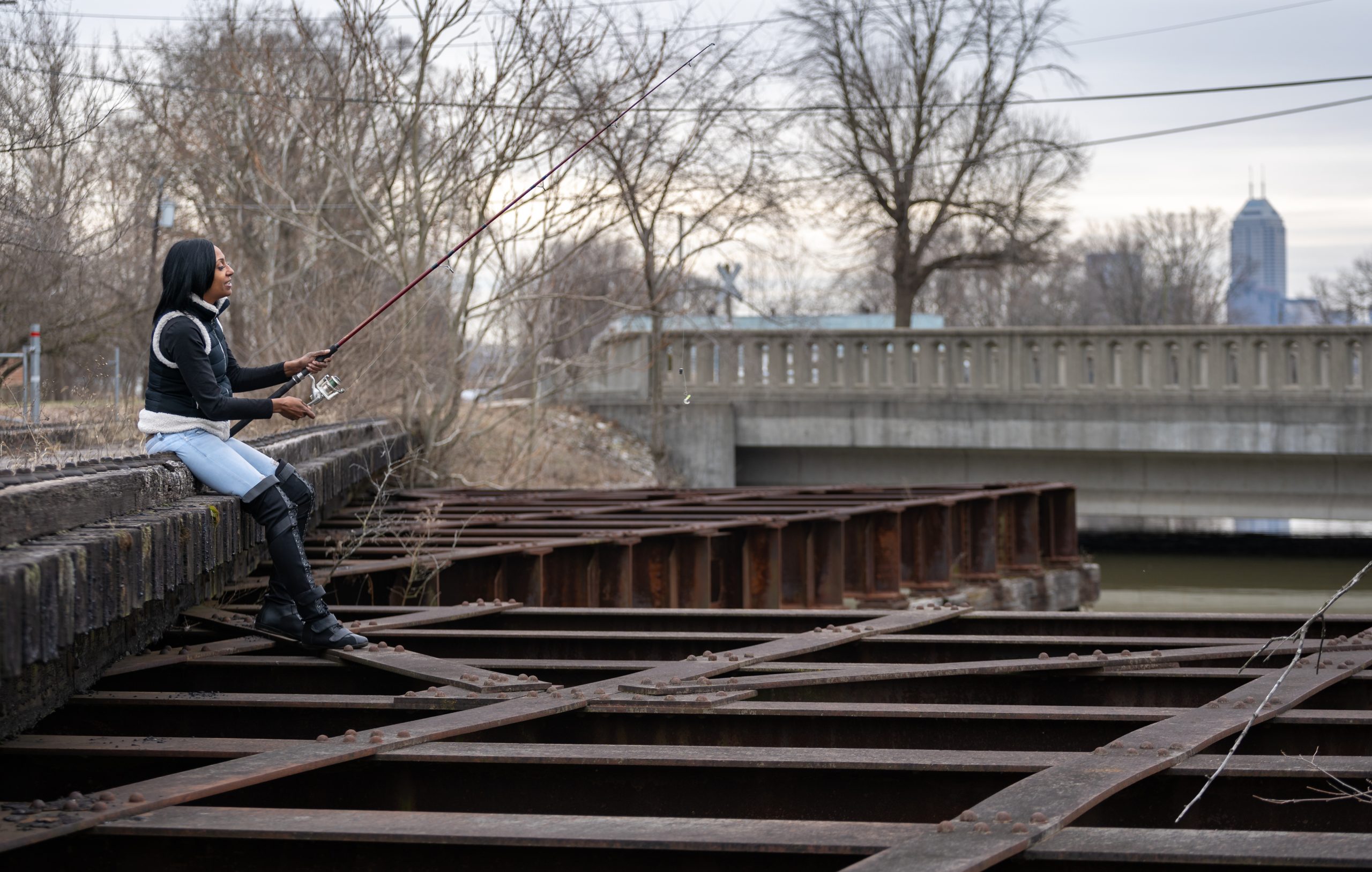
In view of downtown, Rosezalynn Sanford fishes off of an old rail bridge that crosses Central Canal just off Burdsal Parkway.
“It’s an everyday thing that connects us. No matter what nationality, background, mental illness, or addiction, everyone can get together. When you’re fishing you come upon people and get to know them. It’s relaxing and it’s an abundant experience.”
Sanford envisions a balance between small business development and rustic, immersive spaces along Central Canal.
“I’d like to see us preserve the natural areas, but also have some trendy things. A shop on the rail bridge here, ice cream. But we could even go back to the old days and have just a little hut to buy bait and get a drink,” says Sanford. “It’s good to have trails and lighting and seating and other landscaping, but back a bit from the water so it doesn’t take away from the fishing experience.”
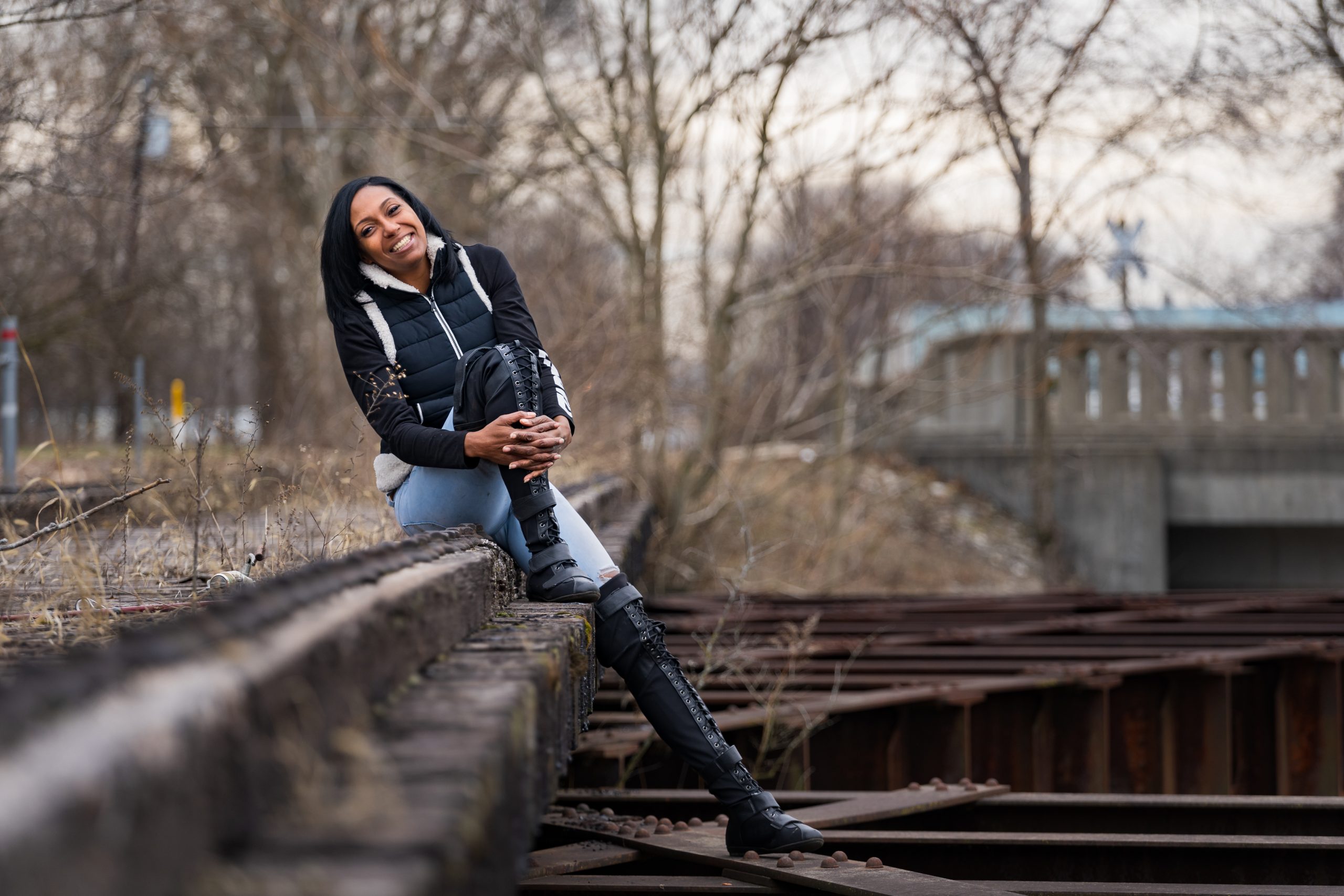
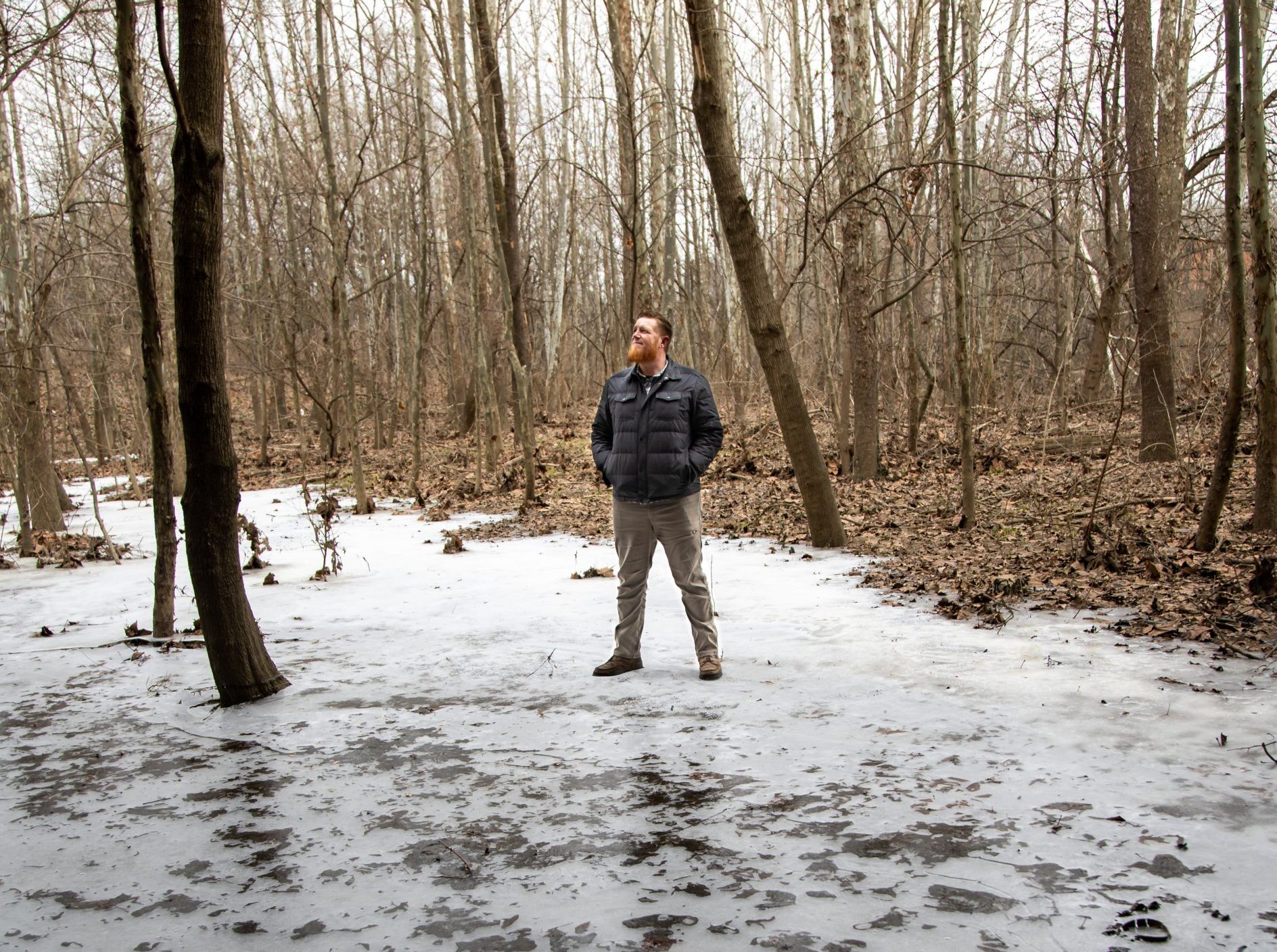
Keith Cruz led us down closer to the water from nearby Fall Creek & 30th Park and it seemed as if we were suddenly far away from city life.
“When it ices over, you can see all these little fish stuck in the ice. As soon as it starts thawing there are tons of birds scavenging…With these beautiful bridges like Central Avenue, it’s really like an outdoor cathedral.”
When asked what his wildest dreams of Fall Creek might be Cruz says, “I’m torn between opening things up and keeping it rustic. It would be good to have small open areas to get down here, but keep these great trees. The sycamores create insulation from the road and they are just beautiful. We need basic access so people can fish and camp and you’re right by the water. There could be rustic steps made of rocks so that people can access it a bit more easily.”
Continuing, Cruz notes, “Every time I get on the Crosstown side of the creek, it feels so far removed from the other side. I’d really like to see more connections across the creek.”
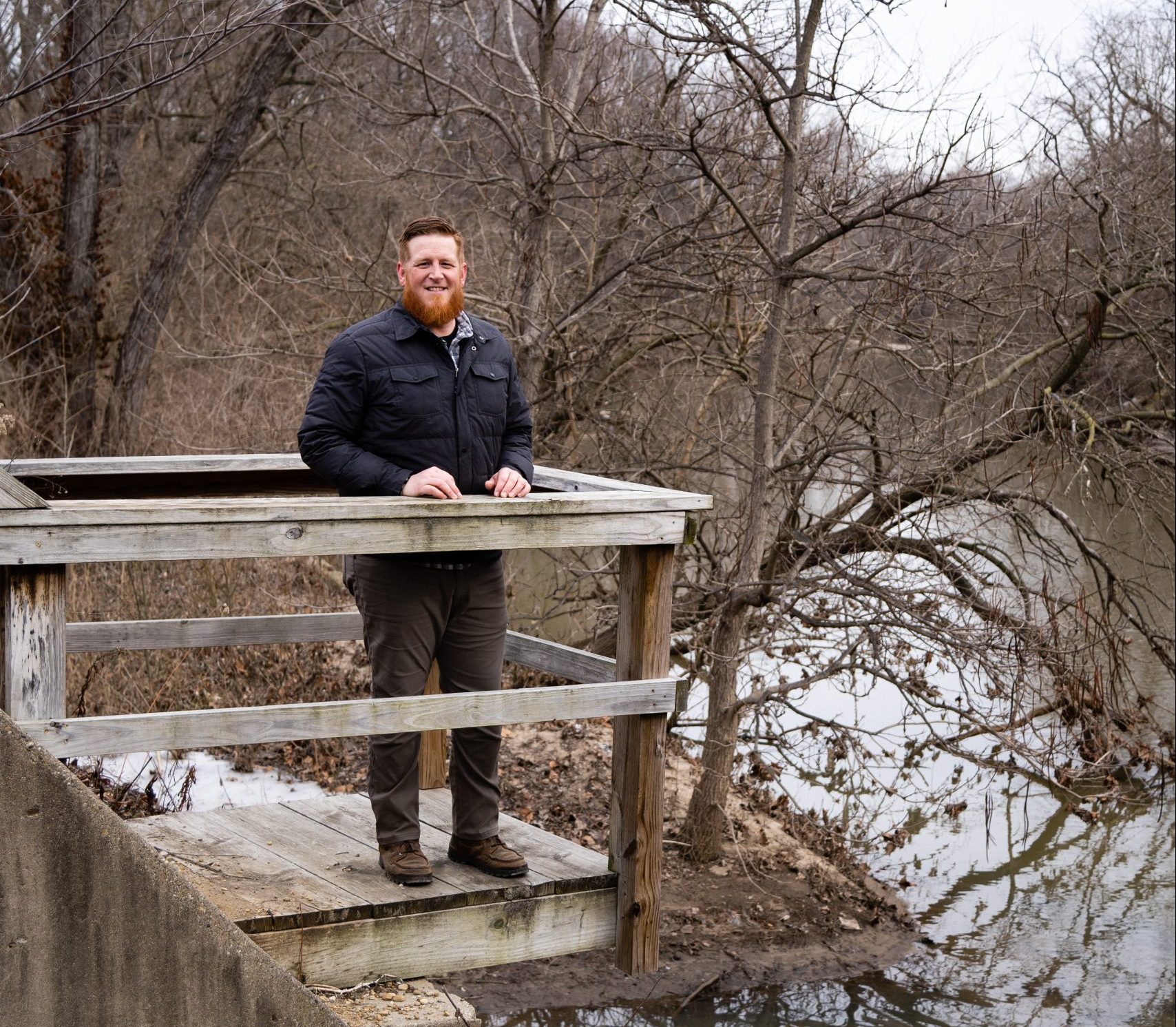
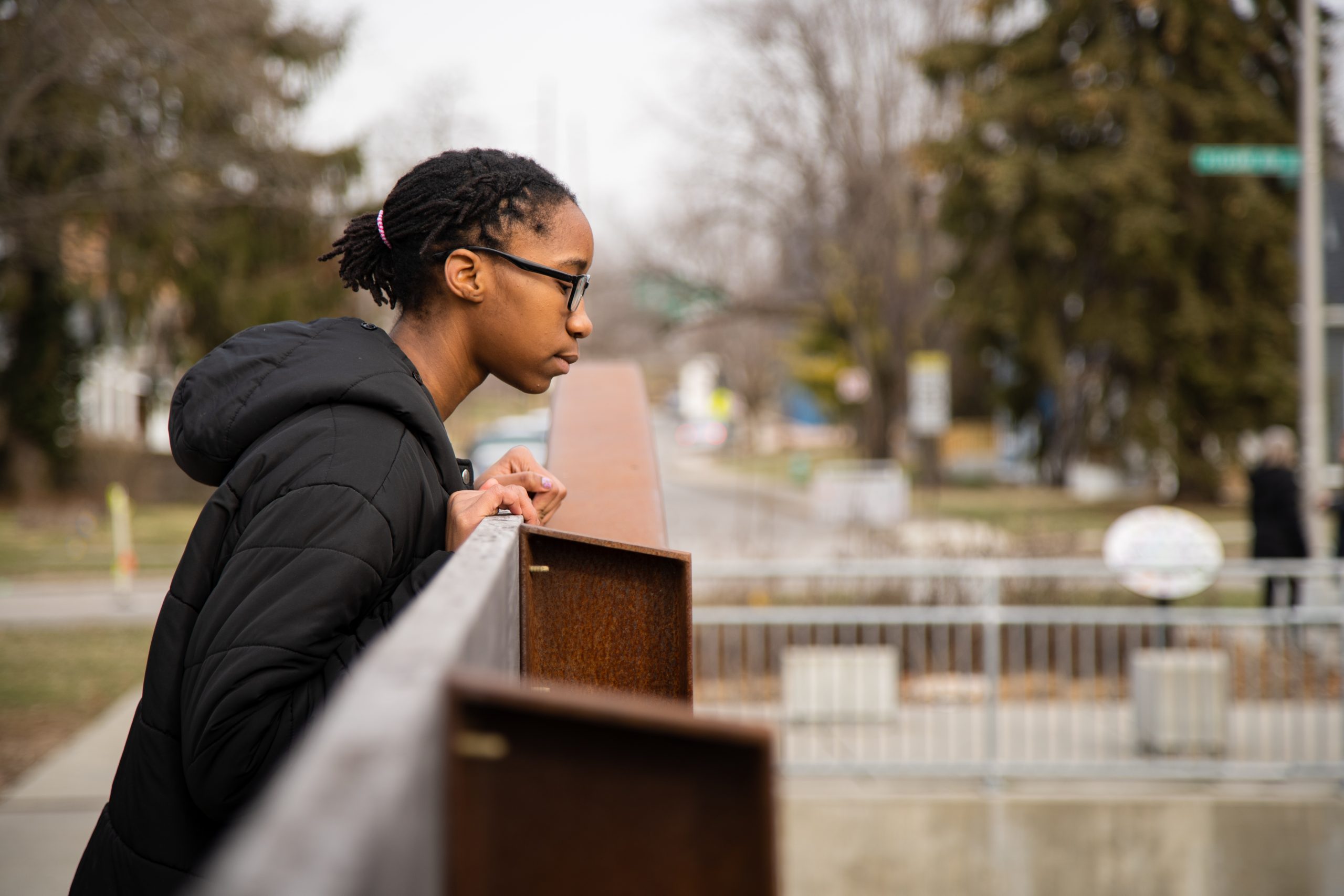
SENSE Charter School Student Council President Shumiah Johnson looks over Barth Avenue bridge into a calm Pleasant Run waterway.
“I moved to this neighborhood 3 years ago. I hadn’t lived near a waterway before. I didn’t hang out by the water until the school got involved. The first thing that happened was Ms. Johnson hosted the Environmental Club and so we started doing cleanups. Some people do hang out along the space. I think it’s just about putting it out there, finding more community events to get people involved.”
One of those community events was the Wind and Water Festival, which SENSE Outreach Coordinator Kate Voss organized, included a rubber duck race on Pleasant Run at Barth Ave.
“Oh it was so fun! We had little rubber duckies out on the water. You bought one for a certain amount and it helped the kids go on a field trip. But it was so ridiculous, we had our net, but it wasn’t big enough and we were out chasing ducks as they floated down the stream. We had someone else jump in to help too, and we made sure we got them all. But we were just laughing the whole time!”
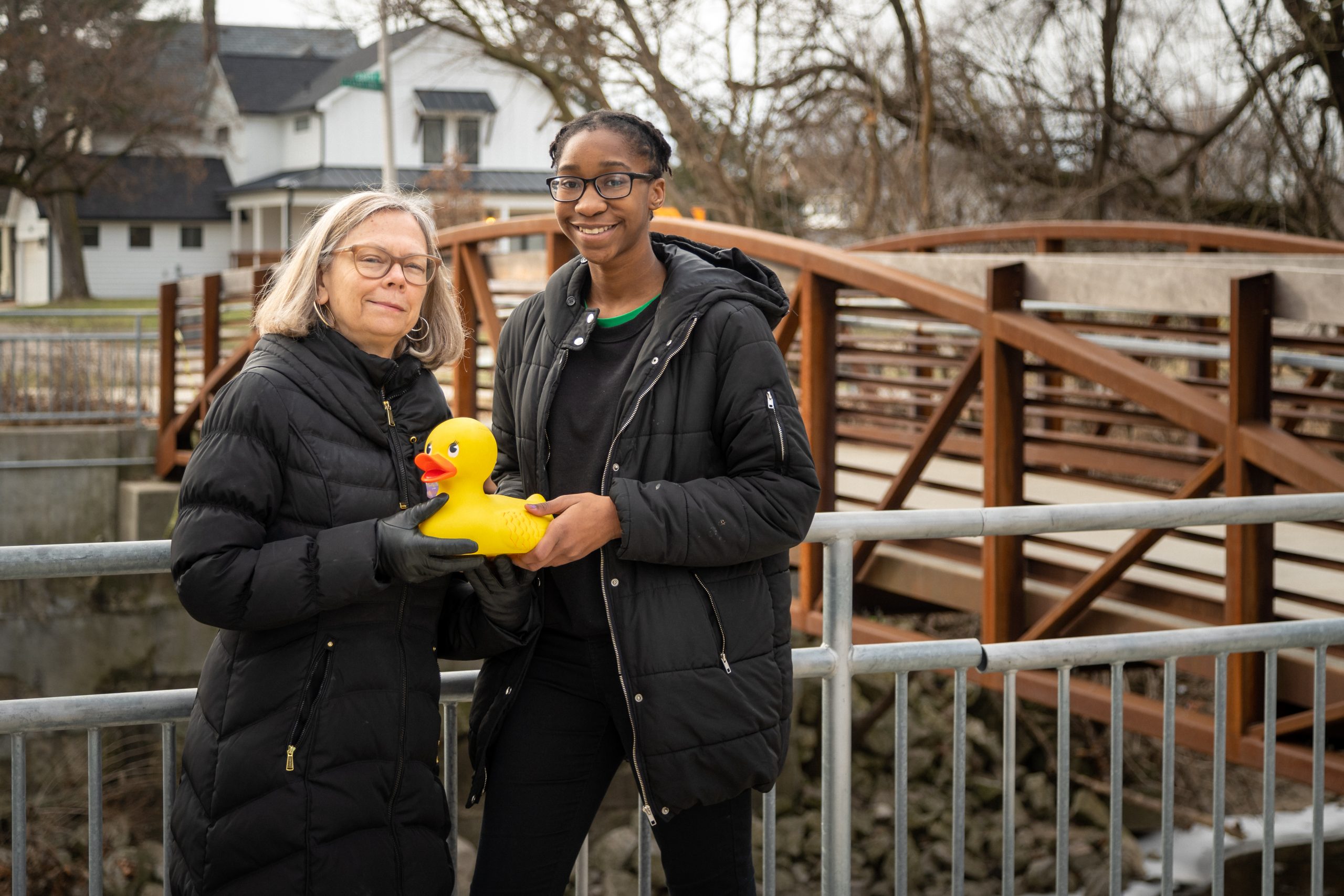
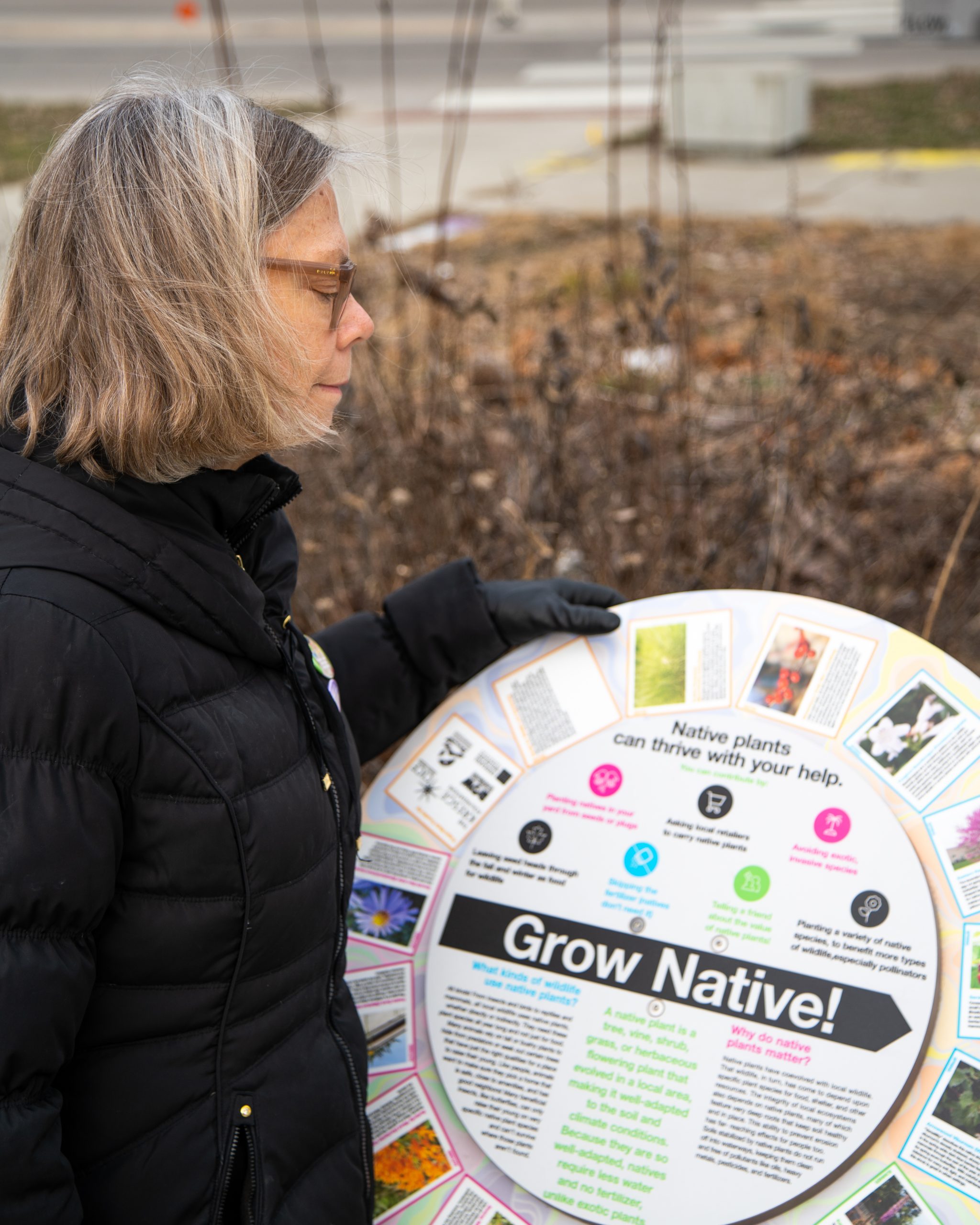
Here, Voss turns the interactive signage at Barth Avenue that shows how native plants improve Pleasant Run and all our waterways.
Signage, native plantings, as well as a sound installation called “Flow” makes this waterway destination a unique spot to gather.
Longtime Emerson Heights resident, Tina Jones stands at an interesting site along Pogue’s Run in Cottage Home where industry meets art and nature.
“When I think of Pogue’s Run I think potential, huge potential. With the many needs of park land and the need to balance money I understand, but we have to speak up so that our green spaces and waterways are taken care of.”
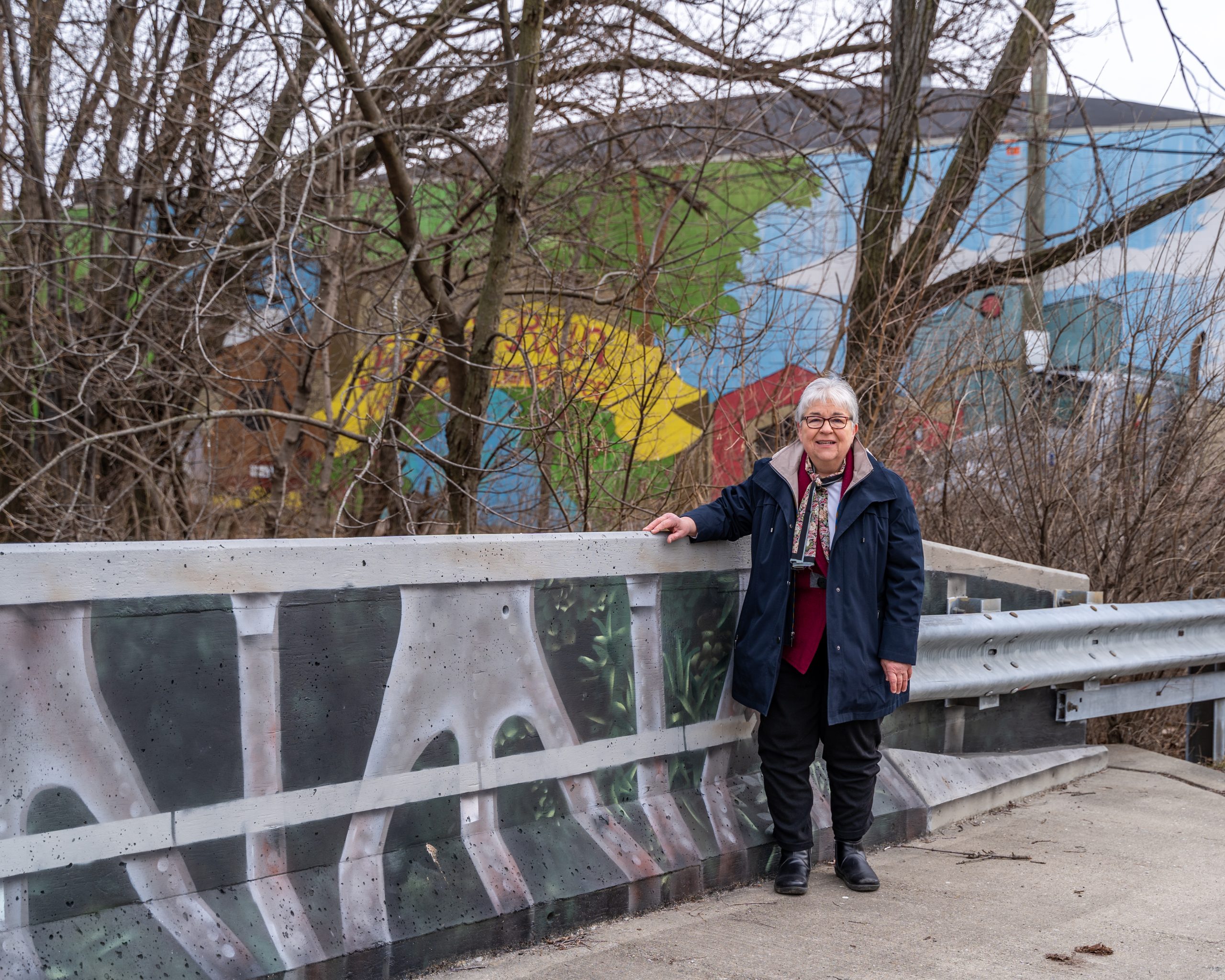

As she looks at the historic structures built as part of the original Brookside Park Community Center Jones says, “I don’t physically engage much with Pogue’s Run anymore, just because I am in a certain chapter of life. But with my work on historic postcards, I make sure that the waterway as part of this area’s historic landscape is preserved…I love the historic sites and how they’ve brought friendly people together over the years.”
Martha Latta, a 13-year Windsor Park neighbor, stands on the Spades Park footbridge over Pogue’s Run, which centers the Feast of Lanterns festival each year in the park.
“I really like the increased walkability this area along Pogue’s Run is seeing and the neighbors that get together. The [Spades Park] library has always been a favorite. I am the Co-Executive Director for Feast of Lanterns and I really enjoy doing that for the neighborhood.”
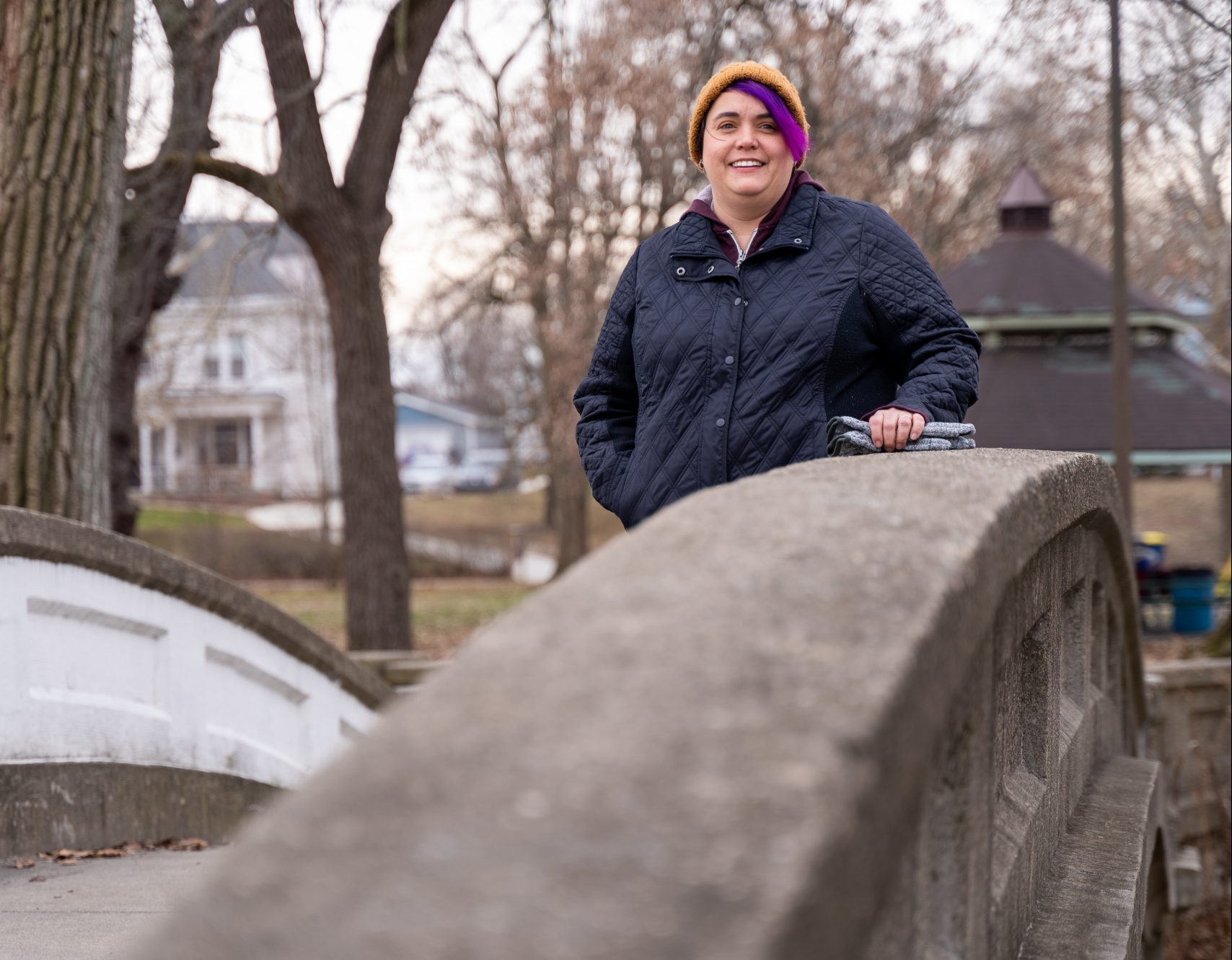
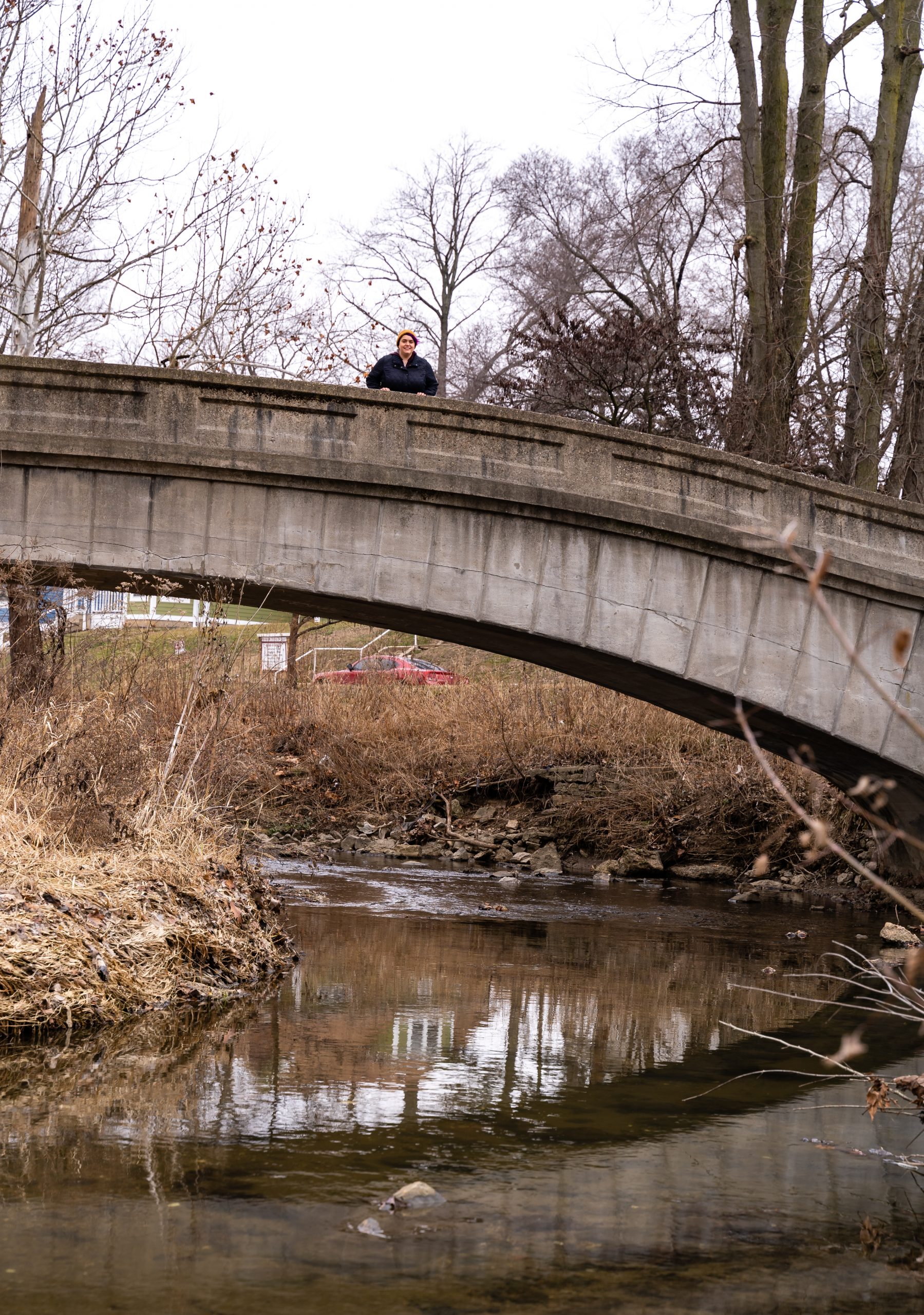
Latta appreciates the increasing connectivity along Pogue’s Run and how its geography contributes to community identity.
“Pogue’s Run really defines our boundaries and who we are. I’ve thought about it more in the past few years because I know we’re working towards usability. I’m excited that my new store will be right on Pogue’s Run and I actually incorporated it into my logo. It’s who we are, it’s part of our landscape.”
Bahrishum Gebregziabher, Haughville resident and business owner, stands at the Emrichsville Dam site. He is part of efforts to improve White River spaces for Near West neighbors.
“As a resident, I enjoy having a river in my backyard. I have educated youth on the White River through the Butterfly Trails Project that connects restored habitat and monarch santuaries together throughout the neighborhood and the White River.”
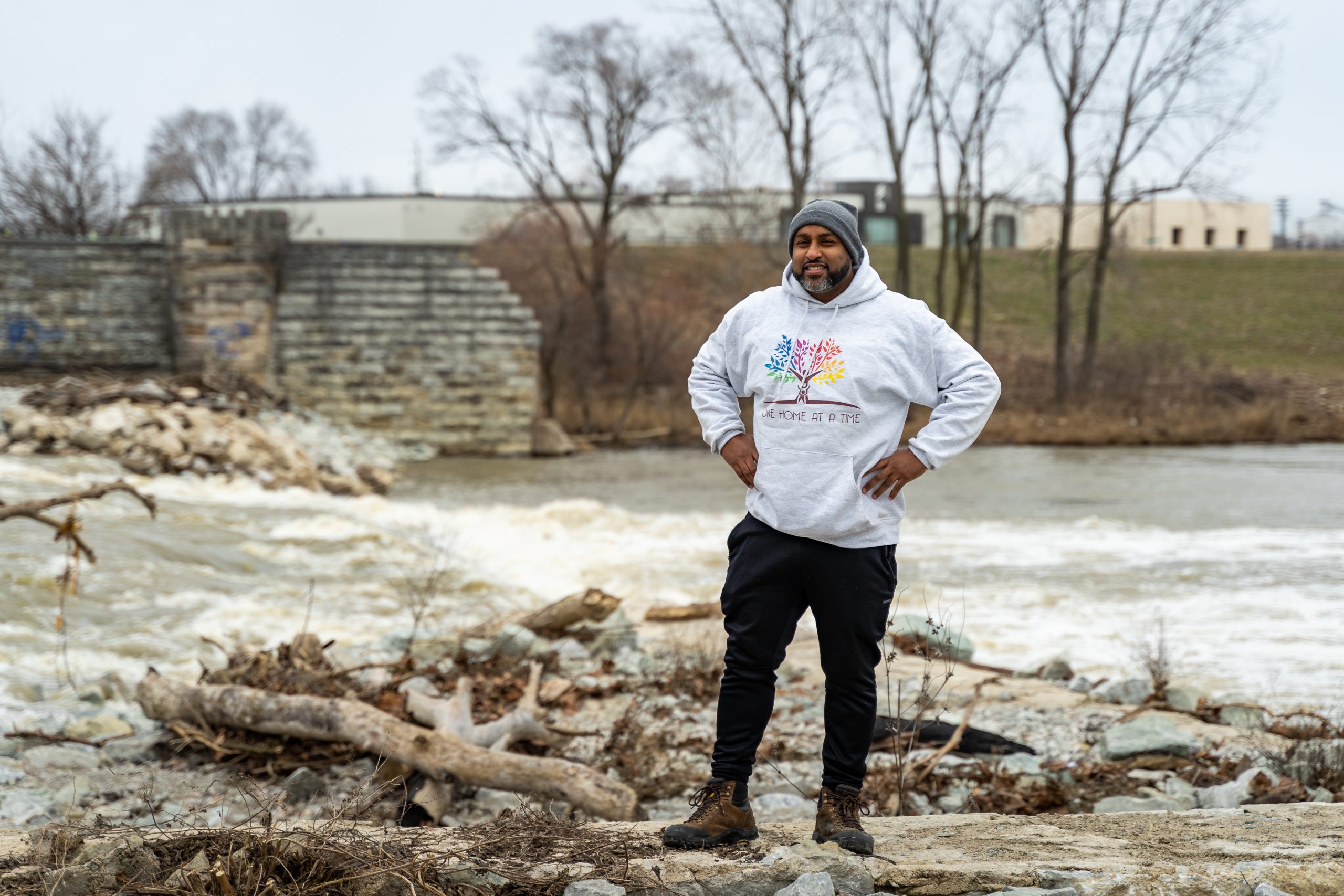
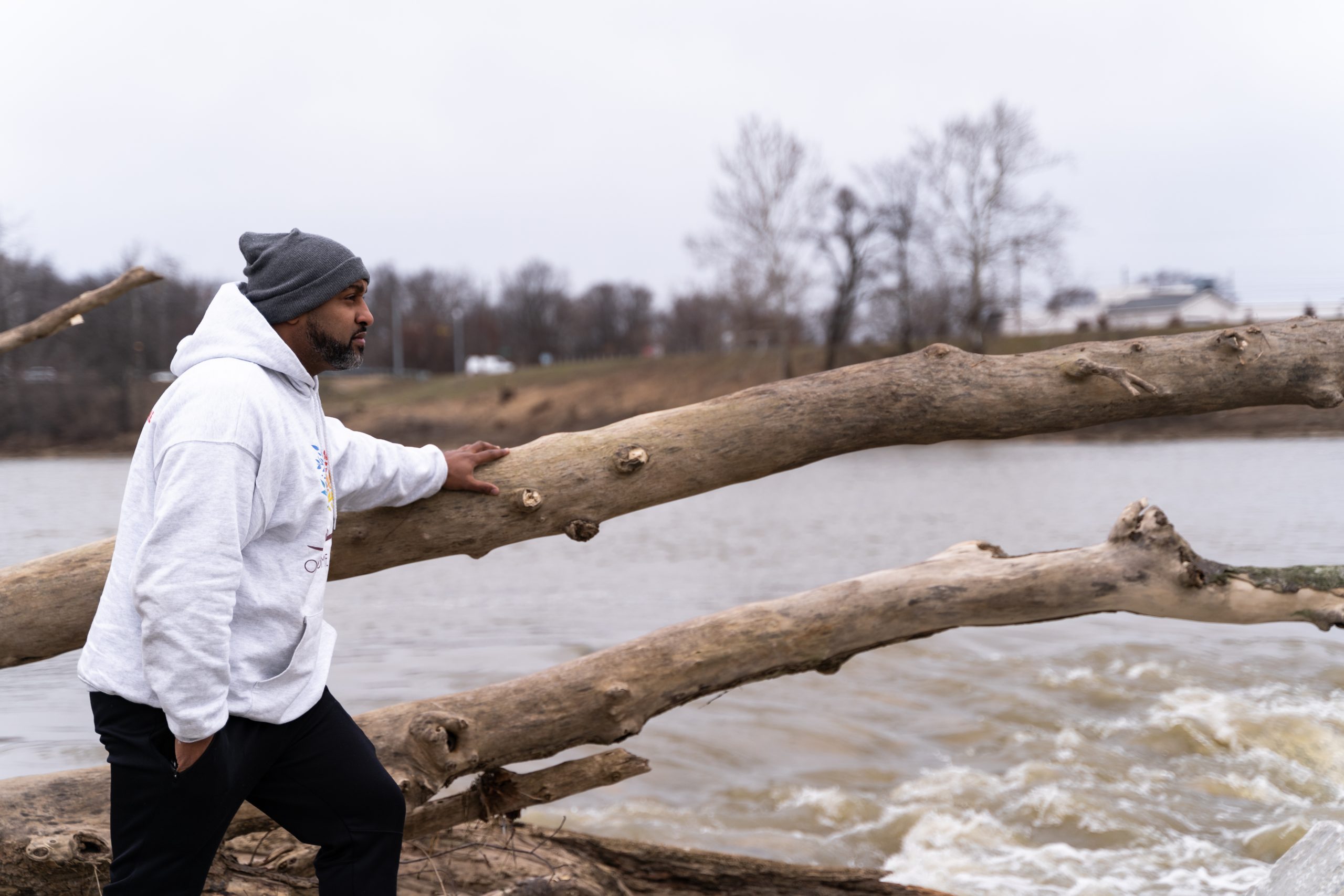
Gebregziabher sees Near West neighbors as key to Indy’s effort to improve the White River.
“I would love the neighboring communities to have a better relationship with the White River. I would also like to see daytime and nighttime activities on the river to take away the negative stigma that is currently associated with the White River.”
Greg Harger trains elite athletes along trails and cross-country courses, including the Urban Wilderness Trail along the White River. Here, he talks with Robert Negron of Indy Convergence about developing projects merging athletics and arts programming in the Near West community.
“The White River is an incredible asset that could allow Indy to take the lead nationally as a model for incorporating waterway activation into urban wellness based on dynamic connections to the natural environment,” says Harger.
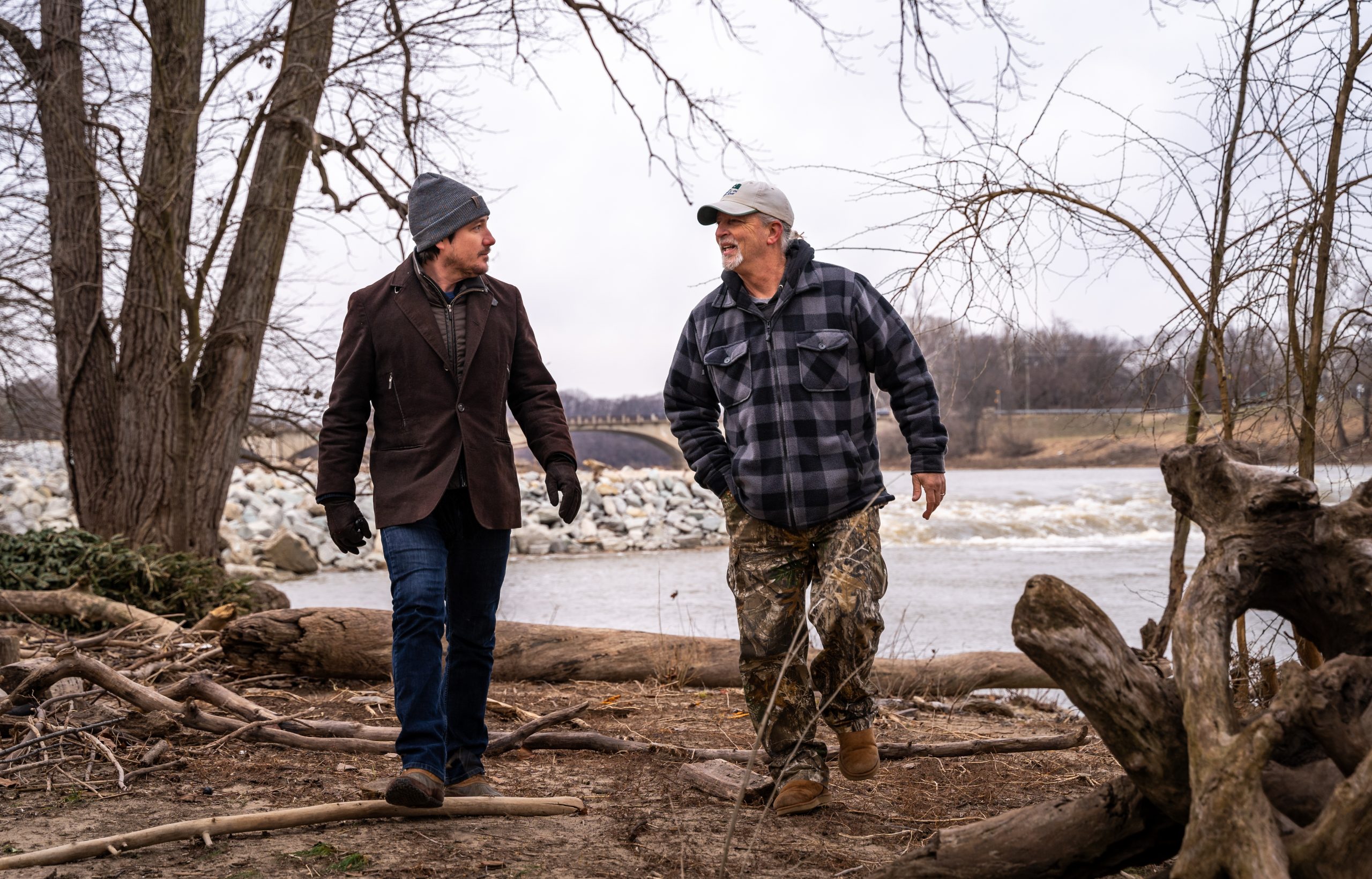
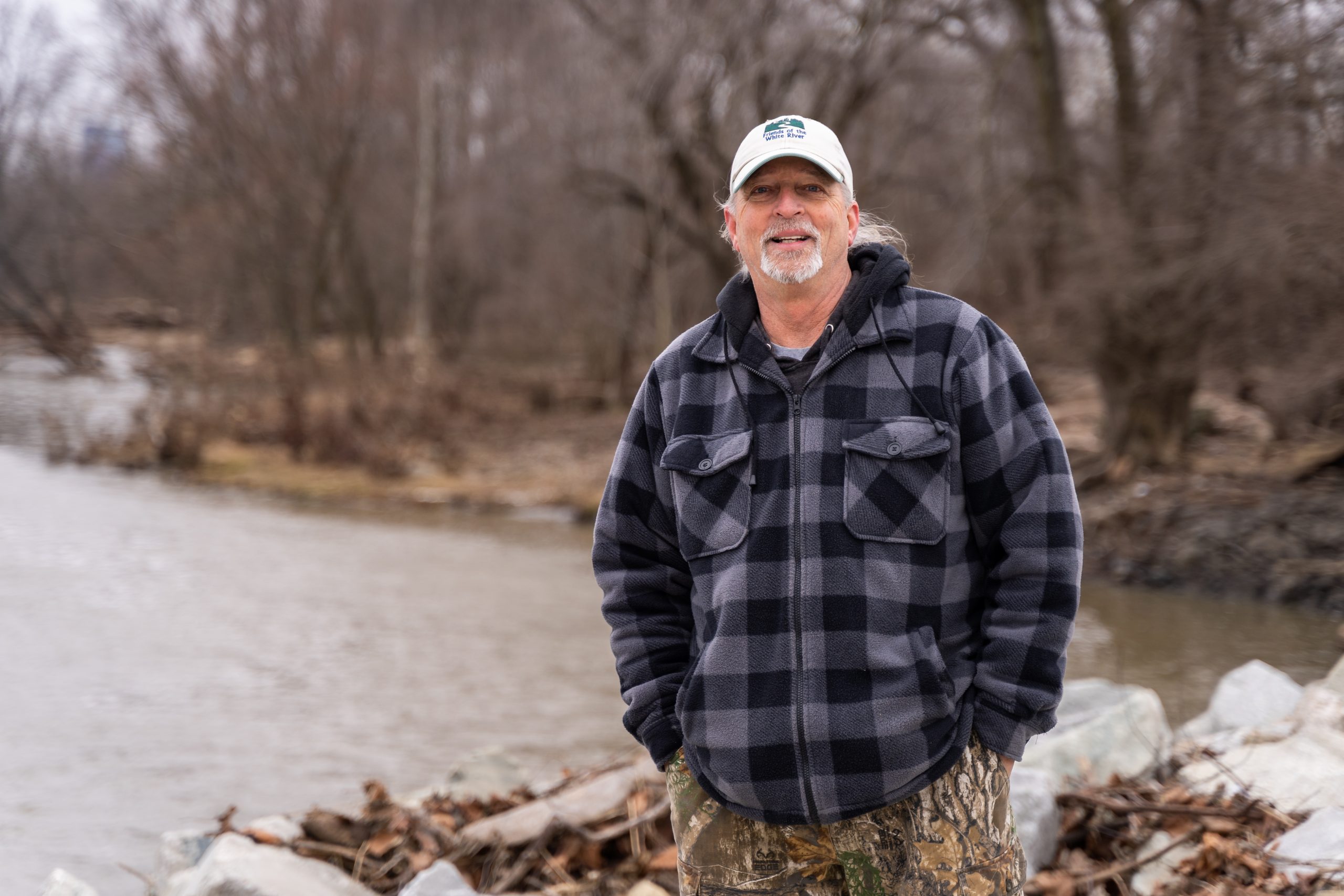
“I hike and explore the White River’s banks, paddle, canoe, and kayak its waters, explore various micor-habitats for flora, fauna and fungus and participate in recreational and arts events held along its shores,” continues Harger.“I would like to see the creation of clean, safe access for existing users and let the communities activate the spaces further organically in advance of development initiatives approved by various river communities. Also, have river-centric leadership understand the difference between an active river community and a river adjacent community.”
Stay tuned for more insights from neighbors as Spring blooms along the waterways. If you would like to share your experience along one of ROW’s waterways, contact [email protected]. Photo Credit: Grant Michaels, 12 Stars Media
